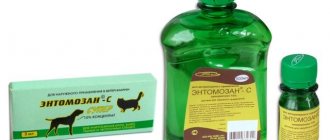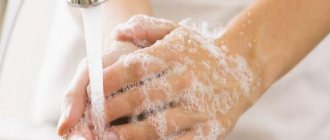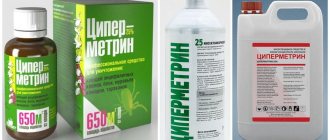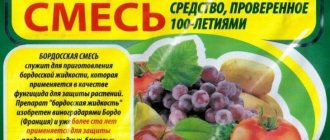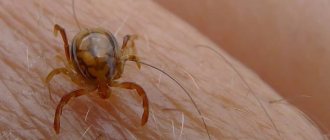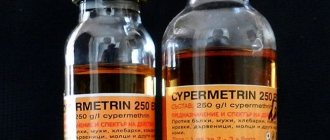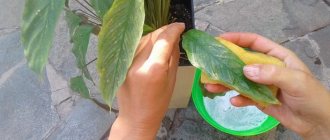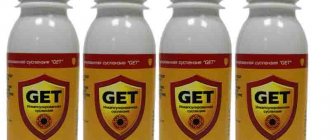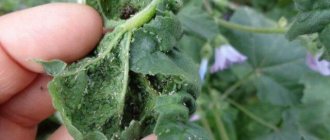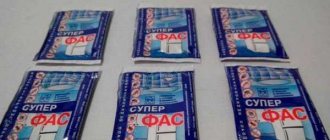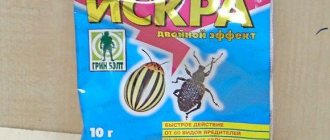What is Entomozan S?
With the help of Entomozan, any farmer can independently remove mites, lice, fleas, bedbugs and other insects from poultry.
Parasites can cause serious inconvenience to chickens. In addition, they are carriers of many diseases, sometimes resulting in the death of the bird, so it is necessary to get rid of parasites as soon as possible. The advantages of Estomozan S include:
- cleaning the poultry house from parasites;
- treatment of chickens from all insects that can parasitize birds;
- prevention of infection with diseases transmitted through parasites.
The popularity of Estomozan is due not only to its effectiveness, but also to its low cost. The drug can be purchased at a veterinary pharmacy or hardware store. The drug is used for:
- treatment of poultry with arachnoenthomosis;
- preventing the appearance of all types of ticks and feather eaters;
- preventing attacks by cockroaches, flies, midges;
- for disinfestation of poultry houses.
To use Estomozan C, it is important to dilute it with water in the correct dosage in order to achieve the desired effect and not harm the chicken. What should you feed geese at home? We talked about this in detail in our article.
What should you feed geese at home? We talked about this in detail in our article.
There are several ways to help pluck a goose quickly. All of them are described here.
Purpose
Entomozan S is prescribed after examination by a veterinarian in the following cases:
- when parasites are detected on the skin of a cat - fleas, lice, lice, itching, scabies, ixodids, demodectic (ear) mites;
- when establishing diagnoses: otodecosis, entomosis, demodicosis, notozdroz, other skin diseases transmitted by blood-sucking parasites;
- as a means of prevention.
Important!
When prescribing medication, you must be careful in dosage and administration, and strictly follow all the veterinarian’s instructions.
Advice from experienced poultry farmers
In case of parasitic infections, you need to act quickly and effectively, otherwise there is a risk of losses, especially among young animals. Experienced poultry farmers are uncompromising in the fight against parasites, and this is what they advise.
- Before breeding entomozan for chickens, you need to conduct a visual inspection of the bird. If there are signs of infectious diseases other than parasites, you need to show sick animals to a veterinarian. During illness, treatment is strictly prohibited!
- To avoid frequent attacks by parasites, it is recommended to use slaked lime and peat as the basis for bedding.
- After processing, you cannot slaughter immediately. Chicken meat will contain substances toxic to humans for another 10-11 days.
- After treatment, you need to thoroughly wash the drinkers and feeders, because the remaining poisons can cause severe poisoning in the bird.
- In order for the poultry farmer to avoid poisoning, it is recommended to take enterosorbents in a higher dosage before processing.
- It is easier to prevent infestation by parasites if you install sand and ash baths in the barn and in the walking yard.
- It is advisable not to keep animals of different species in the same room.
- It is recommended to keep chicks separately from adults for at least 1-1.5 months. Parasites that do not cause harm to mature livestock can provoke outbreaks of fatal diseases in young animals.
Preparations for preventive treatment should not be used too often. They will be replaced by effective prevention and maintenance of proper sanitary and hygienic conditions in the poultry house. If you follow all the rules for using drugs, the risks are minimal!
Ectoparasites disturb animals, which affects their health and productivity. It is necessary to use a drug that reliably exterminates annoying insects, but has low toxicity for warm-blooded creatures. There is a demand for a product that kills ticks, lice, and fleas not only on animals, but indoors, in pastures, and in walking areas. Such a drug is Entomozan S.
Treatment of piglets
If you are treating with Entomozan-S, the instructions for use for piglets suggest a number of actions that need to be performed. Piglets are treated if ticks or lice are found on animals. If mites (sarcoptic mange) are found, the animals are treated with a 0.05 percent solution. Particular attention should be paid to the ears of animals, because this is the most popular place for ticks to settle. If lice (hematopinosis) were noticed in piglets, they are treated with a 0.01 percent solution. You need to repeat the procedure in a week.
Entomozan instructions for use, how to breed for chickens and other birds – Your favorite farm
Entomozan s is one of the most effective means used to kill parasites that infect poultry. This drug has minimal toxicity to animals, has a long-term effect of use, as it remains on the walls of the chicken coop for a long period of time, and is used to treat chicken diseases caused by parasites.
What kind of drug is this?
The main advantages of Entomozan are:
- cleaning the poultry house from parasites;
- treatment of poultry against insects parasitizing in feathers;
- prevention of diseases transmitted by parasites.
You can buy this drug in pharmacies. Another advantage is its low price, which varies between 45 rubles; a large bottle costs about 450 rubles.
: DIY duck house - learning together
Instructions for use Entomozan - how to dilute and process
Entomozan is a medicinal product based on insecticides to combat animal ectoparasites. Used for disinfection of premises. The active component is cypermethrin. The proportion of the substance in the composition of the drug is 10%. Available in the form of a concentrated yellowish emulsion.
Immediately before use, prepare a solution in dosage according to the instructions. The drug, ready for use, becomes white in color and has a sharp, specific odor. Entomazan is packaged in polymer ampoules and bottles. The ampoules contain 2 ml of the product, the bottles contain 50 ml and 500 ml.
Entomazan is stored in a dark place with a temperature no higher than 25 degrees Celsius. The shelf life of the emulsion is 3 years from the date of manufacture. The prepared solution should be used within 48 hours.
If time restrictions are not observed, the drug causes side effects and shows low effectiveness. Domestic product.
Action of Entomazan
According to the hazard class, the drug belongs to low-toxic substances. If the instructions are followed, it does not cause local skin irritation, side effects from the gastrointestinal tract, or the central nervous system.
Exceeding the dosage of Entomazan in animals causes:
- intense salivation;
- lacrimation;
- weakness;
- apathy;
- loss of appetite;
- vomiting;
- convulsions;
- trembling throughout the body;
- redness of the skin, rash, itching at the treatment sites.
Cypermethrin has a systemic, contact effect. When it comes into contact with the skin, some of it penetrates the bloodstream and spreads throughout the body. A large proportion of the drug remains on the surface of the skin and fur of the animal. The active substance Entomazan is quickly eliminated from the animal’s body in urine.
The drug acts on insects immediately upon contact, the result is fixed after blood containing the insecticide enters the insides of the insects. Initially, paralysis occurs, then death.
The action of Entomazan is based on blocking nerve impulses, as a result of which the functioning of the peripheral nervous system is disrupted.
Precautions for humans
Cypermethrin itself can cause side effects in humans of the following nature:
- from the gastrointestinal tract - nausea, vomiting, abdominal pain, diarrhea;
- central nervous system – weakness, dizziness, headache;
- skin – redness, itching, rash, pallor.
Entomazan emulsion is safe for health provided that personal protective equipment is used. Treatment of animals and disinfestation of premises must be carried out wearing rubber gloves, a respirator, and a protective suit. They must be removed immediately after the procedure. Wash your hands with soap and wash. If possible, take a shower.
Limitations and side effects
Entomozan S cannot be used in the following cases:
- for infectious pathology;
- during pregnancy and lactation;
- in case of hypersensitivity to the components of the drug.
If the recommended dosages and concentrations of the drug were followed, no side effects were noticed by specialists. In case of overdose, complications are possible:
- increased salivation;
- vomit;
- lacrimation;
- weakness;
- apathy;
- refusal to eat;
- convulsions, tremors;
- itching, rash, redness of the skin.
Breeding rules
To make a treatment solution, first prepare an emulsion. The optimal ratio of the drug and water is 1:2. The solution must be shaken thoroughly and poured into a separate bottle. A concentration of 0.01% is suitable for pets.
Residues of the product are neutralized using slaked lime. This is a prerequisite for using Entomozan solution. The remains must be buried in the ground to a depth of at least 1 meter. The container in which the animals bathed, the spray bottle and other bottles must be treated with soda ash (optimal concentration 5%). After applying it, you need to wait about 4 hours and rinse the items well with water.
Slaked lime deactivates the active ingredient “Entomosan”
Treatment of livestock premises
The treatment procedure is carried out with a 0.1 percent solution of the drug. Judging by what the instructions for use say about the consumption of the Entomozan-S preparation, 100 milliliters of solution per square meter of surface is required to treat the room. The drug is applied to places where insects accumulate.
If treatment is carried out in the presence of piglets or other animals, it is necessary to remove food and water from the room and open all doors and windows. When treating the premises, animals are not treated to avoid poisoning from an excess of the drug in the body. A person can enter the room no earlier than an hour and a half after the procedure. If there are no animals in the room during processing, then there is no need to open the doors. Treat all surfaces, first removing food and water, and leave the room closed for an hour. After this, sweep up all the dead insects, ventilate the room for an hour and only then return the animals.
How to breed Entomozan S
Before processing, it is necessary to dilute the emulsion in accordance with the instructions. To do this, the drug is diluted in a ratio of one to two. The mixture must be thoroughly mixed for 15-20 minutes. After this, the drug is poured into a container, brought to the required volume, and mixed thoroughly again. A solution concentration of 0.05% is suitable for birds and pigs. To treat other animals you will need a concentration of 0.01%. The same dosage can be used when it is necessary to treat the room.
Quite often, excess aqueous solution remains after work. They must be neutralized using slaked lime. After this, it is recommended to bury the mixture to a depth of at least one meter. Bottles that were used for spraying and bathtubs should be treated with soda. After this, the container is thoroughly rinsed with water.
Methods of using an aqueous solution
For spraying goats and sheep, the consumption of the diluted product is 3 liters per animal. You can also prepare a bath where each animal is placed for one minute. After the bath, the animals must remain on a special area for some time to allow the remaining liquid to drain. If the animal has recently been trimmed, it can be processed after three days. The spray method is used for cattle. For each individual, 2-4 liters of aqueous solution are consumed. It is recommended to treat pigs twice. The interval between procedures should be 5 days.
For spraying horses, 3-5 ml of water emulsion is used per kilogram of weight. Poultry should be processed twice. The procedure should be repeated after 8 days. One bird will need 15-30 ml of solution.
(Alternative video: Treating cows against flies and ticks)
Indications for use
Indications for use are lesions of the skin by parasites (ticks, fleas, bedbugs) in cattle, horses, sheep, dogs, as well as arachnoenotomosis in birds, infestation of flies and midges. The drug is also used to disinfect premises where livestock and poultry live, and to prevent infections by skin parasites.
Important! All procedures must be performed with personal protective equipment - a respirator, gloves, and a gown.
Analogues of the drug
There is a drug “Entomozan-S Super” on sale, the instructions for use of which indicate that it is an analogue of the drug “Entomozan-S”. "Entomozan Super" is a new medicine that was made on the basis of a previously released drug. Its main purpose is also to combat various types of insects that have adapted to conventional veterinary drugs. The medicine contains a pyrethroid element, which increases the effectiveness of treatment and prolongs the duration of action. The main properties remained unchanged: the color of the drug is light yellow with a barely perceptible, slight odor.
The treatment solution must be prepared immediately before use. It is necessary to approximately determine how much solution may be needed and dilute the required amount of the drug in water.
Entomozan is low-toxic, but during use it is important to follow the instructions and rules of use to prevent skin irritation and the occurrence of side effects. Often, when inhaling drug vapors, the functioning of the stomach and intestines is disrupted, mental disorders occur, and coordination is impaired.
If you exceed the prescribed dosage for animals, you may encounter the following side effects:
- active secretion of saliva;
- symptoms of conjunctivitis;
- general malaise;
- apathetic state;
- loss of appetite;
- vomiting and nausea;
- tremor of the limbs and tremors in the body;
- redness on the skin, rash, soreness and itching in the areas where treatment was carried out.
Strictly adhere to the dosage of the drug “Entomozan”, otherwise your pet may suffer
Symptoms of side effects often occur if there is individual intolerance to individual components that make up the drug. If mild symptoms occur after using Entomozan, treatment is not carried out. Clinical manifestations disappear on their own within three days from the moment the last treatment was carried out.
Clinical manifestations of moderate severity - convulsions, severe allergic reaction to the skin, vomiting or increased weakness - are a reason to consult a specialist or take measures yourself
It is important to remove any remaining product from the skin and give the animal medications that can eliminate unpleasant symptoms.
When processing a large number of animals, it is necessary to make a test on 6-11 animals of different ages and fatness
These precautions will help prevent serious problems.
If clinical manifestations of allergies or vomiting do not appear 4-5 days after treatment, disinfestation can begin. Cypermethrin has contact and systemic effects. When it comes into contact with the skin, a certain amount of the component can enter the systemic bloodstream and spread throughout the body.
Entomozan blocks impulses from nerve fibers, which disrupts the functioning of the central nervous system. The effect of the drug begins within a few minutes, so the product is considered effective and efficient.
Treatment of a poultry farm or chicken coop
Chickens are usually infested by mites, bedbugs or cockroaches. If there is a need to treat the chicken coop with the drug, this can be done without the presence of birds in the room. What does the instructions for use for chickens recommend about this for the drug “Entomozan-S”? The consumption of Entomozan-S will be approximately 40 milliliters per square meter of room. To get rid of insects, you need to spray all the walls, ceiling, floor and all structures in the chicken coop. It is best to repeat the procedure after 15 days in spring or autumn and a week later in summer. An hour after the room has been treated, you need to ventilate the chicken coop, sweep away and throw away all dead insects.
Reading about Entomozan-S, instructions for use of which are provided in the article, we understand that there is another option for use. If it is not possible to remove the poultry from the premises, the treatment can be carried out in the presence of chickens, but the concentration of the drug is taken to be half as much. You need to open all the doors for good ventilation and process the room without touching the chickens. After this, the person is advised to leave the premises. If chickens are infected with a downy feather eater, then the birds need to be treated with a 0.05% solution of the drug.
Entomozan S - how to breed for chickens?
Entomozan C is considered on the market to be one of the best drugs for combating parasites that infect the body of domestic chickens. The product has minimal toxicity to poultry and is therefore widely used by veterinarians.
Entomozan C is considered on the market to be one of the best drugs for combating parasites that infect the body of domestic chickens. The product has minimal toxicity to poultry and is therefore widely used by veterinarians.
The advantage of Entomozan is that after treatment it remains on the treated surfaces for a long time, preventing the appearance of parasites.
What is Entomozan S?
With the help of Entomozan, any farmer can independently remove mites, lice, fleas, bedbugs and other insects from poultry. Parasites can cause serious inconvenience to chickens. In addition, they are carriers of many diseases, sometimes resulting in the death of the bird, so it is necessary to get rid of parasites as soon as possible.
The advantages of Estomozan S include:
- cleaning the poultry house from parasites;
- treatment of chickens from all insects that can parasitize birds;
- prevention of infection with diseases transmitted through parasites.
The popularity of Estomozan is due not only to its effectiveness, but also to its low cost. The drug can be purchased at a veterinary pharmacy or hardware store. The drug is used for:
- treatment of poultry with arachnoenthomosis;
- preventing the appearance of all types of ticks and feather eaters;
- preventing attacks by cockroaches, flies, midges;
- for disinfestation of poultry houses.
To use Estomozan C, it is important to dilute it with water in the correct dosage in order to achieve the desired effect and not harm the chicken
How to dilute and use?
The main active ingredient of the product is cypermethrin. The total proportion of cypermethrin in the preparation is 10%. The composition also contains auxiliary components that prolong the duration of action and increase efficiency. Entomozan C successfully copes even with those parasites that have developed an addiction to other insecticidal preparations.
Entomozan in undiluted form is a yellowish liquid with a weak specific odor. When combined with water, the liquid changes color to white, the smell intensifies, becoming pungent:
- glass ampoules – volume 2 ml;
- plastic bottles – volume 50 ml;
- plastic bottles – volume 500 ml.
When purchasing, you need to pay attention to the expiration date of Entomosan C, since an expired product is not effective. The shelf life of the drug is 3 years, the purchased drug is stored in a dark place at a temperature not exceeding 25 degrees
Before using the drug, you should remember that it cannot be used if the poultry population contains individuals suffering from infectious diseases. Within ten days after treatment, chickens cannot be slaughtered for meat. The prepared solution is stored for no more than 48 hours, after which it loses effectiveness.
If the dosage is not observed during breeding, Entomozan C can cause side effects in birds:
- lethargy;
- refusal of food;
- lacrimation;
- convulsions.
The bird is not treated directly with Entomosan C, but only in the room where it is kept. To prepare the solution, the product is initially diluted with water in a ratio of 1:2 and mixed thoroughly for 10-15 minutes. Then pour into a suitable container and dilute to the desired consistency. To treat the chicken coop, the ratio of the drug to water should be 1:200.
It is most convenient to carry out treatment with a container with a spray bottle. For one sq. m of poultry house you need 25-50 ml of the drug, depending on the degree of infection. Not only the walls and ceiling are thoroughly sprayed, but also support pillars and hard-to-reach places under cell batteries. If there are eggs in the chicken coop, they must be removed before processing.
Treatment with Entomosan should be carried out twice. If the temperature in the chicken coop does not exceed 20 degrees, then re-treatment is carried out after 10-20 days.
If the temperature is above 20 degrees, then after 5-7 days. An hour after treatment, the chicken coop must be thoroughly ventilated, the drinkers and feeders must be washed, and all dead parasites must be thoroughly swept out. Only after this can chickens be allowed into the house.
If it is not possible to remove the bird from the premises during treatment, then treatment with Entomosan C can be carried out in the presence of the bird. In this case, the chickens themselves are not treated, and the concentration of the solution should be two times lower. During this treatment, it is necessary to open windows and doors, and if possible, turn on ventilation.
Storage conditions
The medicine must be stored away from sunlight, in a dark, dry place. Do not keep the drug near food or near fire. The storage temperature of Entomozan-S is a minimum of 10 degrees below zero and a maximum of 25 degrees above zero. The drug can be stored for three years from the date of production; after this period its use is strictly prohibited. You cannot store already diluted emulsion. After treating animals or premises, the remaining solution must be destroyed.
Entomozan-S: how to properly dilute the drug for treating chickens?
Entomozan-S is an effective low-toxic antiparasitic agent, the targeted action of which has a detrimental effect on skin blood-sucking insects.
Treatment of poultry against ticks and fleas should be carried out together with disinfestation of the chicken coop. The named drug is suitable for the treatment of warm-blooded domestic animals and poultry, and is also used for disinfestation of the premises in which they are kept.
The drug is available in the form of a concentrate, which is a clear, light yellow liquid. Entomozan-S is diluted with water to form a white emulsion.
The active ingredient of Entomosan C is Cypermethrin; the content of this component in the drug is 10%. It has a contact effect on parasites. After the product gets on the skin of the bird, part of the substance penetrates into the blood. The remaining emulsion settles on the feathers.
When the solution comes into direct contact with parasites, the latter experience paralysis of the nervous system, followed by death. The product must be stored in a dark place, avoiding direct sunlight. After the expiration date (3 years from the date of manufacture), the drug cannot be used.
Entomozan C has an analogue - Entomozan Super. The medicine has medicinal properties similar to the original. What makes it different is that this new drug is able to fight parasites that have developed immunity to veterinary drugs.
The drug is prescribed when skin parasites are detected:
- fleas;
- lice eaters;
- lice eaters;
- bedbugs;
- ticks;
- chicken lice.
The product is used as an antiparasitic medication not only for poultry. The emulsion is used for processing:
- pigs;
- cattle;
- horses;
- dogs;
- cats.
The medication has few contraindications. The drug should not be given to animals during the last third of pregnancy or during an infectious disease. For other warm-blooded animals and birds, the drug, subject to the recommended dosage, does not pose any danger.
Before starting treatment, you must carefully study the instructions for use. An emulsion is prepared for chickens as follows:
- The concentrate is mixed with water in a ratio of 1:2.
- The solution is thoroughly mixed for 20–25 minutes.
- The resulting white emulsion is poured into a container and brought to the required volume. Excess, if any, is destroyed
- The concentration required for treating poultry is 5 ml/l of water.
Chickens are sprayed with the product. Treatment lasts 16 days. During this period of time, the birds are treated twice, once every 8 days. Each individual requires no more than 30 ml of emulsion. Chickens with skin damage (scratches, scratches) need to heal the deformed areas of the skin before treatment.
To achieve a 100% result, it is necessary to treat the room in which the bird is kept. Blood-sucking insects make nests on the walls, under the roof, and on perches.
They need to be eliminated. The 0.01% concentrated solution should be poured into a spray bottle and thoroughly sprayed on possible nesting sites for blood-sucking parasites.
As a preventative measure, it is recommended to spray birds once every 30 days. The presence of personal protective equipment (respirator, gloves) when working with the emulsion is mandatory. It is not recommended to smoke, drink or eat during the procedure.
The strong odor of the emulsion may cause dizziness. At the first signs of discomfort, you should stop treatment and go out into fresh air. The process of disinsection of premises and poultry should not last more than 6 hours.
Excess emulsion must be destroyed. For this:
- 1. The liquid is poured into a container with slaked lime.
- 2. Lime is soaked in an aqueous solution and buried in the ground to a depth of at least 1 meter.
- 3. The container in which the poultry was processed is treated with soda ash.
Indications and contraindications
Entomozan C is effective against many types of external parasites. It should be used against fleas, lice, ticks, bedbugs, lice eaters, blood suckers, lice, feather eaters, midges and flies.
The medicine has a detrimental effect on fish and bees, so treatment should be carried out at a safe distance from their habitats.
Contraindications for use:
- individual intolerance to the components included in the composition;
- last trimester of pregnancy in females;
- associated infectious diseases.
Treatment of the apartment with Neostomazan
As a rule, the consumption of solution when treating an apartment depends not only on its area, but also on the purpose of disinfestation. For example, for preventive purposes, it is enough to use 5 ml of the drug diluted in 1 liter of water for one apartment. If a large apartment is infected, you will need 10 ml of the product and 2 liters of water.
To approximately calculate the required volume, you need to pay attention to the amount of upholstered furniture. After all, to process it you will need twice as much solution
The diluted preparation is applied with a spray bottle not only to the floor, but also to the walls. The sprayer must be held at arm's length, 20 cm from the surface to be treated. Since this drug has a contact effect, care must be taken to ensure that it is applied wherever parasites may be located.
In general, it is recommended to start treating the home from the animal’s sleeping place. If fleas are already infested, there will be a large concentration of them on the animal’s rugs and favorite bedding. If possible, it is better to wash them in hot water. Carpets and rugs are treated with the product.
After the procedure, the room must be ventilated for at least three hours. Places where there is a possibility of contact with skin should be wet cleaned. However, complete restoration of order and general cleaning should be carried out after three weeks, when all parasites have already been destroyed.
If desired, you can carry out repeated disinfestation. However, 10-15 days should pass after the first treatment. If all parasites are destroyed the first time, then the concentration of the drug can be reduced. In this case, it is enough to dilute 5 ml per 3 liters of water.
How to use
According to the instructions, Entomozan S for dogs should be diluted in the proportion of 1 ml of concentrate per 1 liter of clean water. An emulsion of this concentration is well suited for killing fleas and other insects. If you are fighting demodectic or sarcoptoid mites, you should make a more concentrated solution. In this case, 1 ml is stirred in 200 ml of water. To treat one animal, depending on its size, you usually need from 1 to 5 ml of concentrate. Features of application depend on the type of parasites.
For entomoses
If fleas, lice or lice are found on the animal, a solution diluted in the above proportions is applied to the pet in strips using a sponge. Instead of a sponge, you can use a brush or cotton swab. There should be a distance of 2-3 cm between the applied stripes. It is important that the solution saturates the wool and penetrates the skin. Usually the drug is first applied to the back, then the sides and stomach. Lastly, the head, neck area and tail are treated.
You can also spray the animal with a diluted product. If this method is chosen, a “Rosinka” type sprayer is used to apply the solution. Entomozan C is applied to moisturize the coat. If the hair is long, you need to lift it with your hand so that the solution penetrates the epidermis. Usually one treatment is sufficient. If signs of parasites remain, the treatment is repeated after 10 days.
Note! It is important to carry out flea treatment in the animal’s habitat. You need to treat the litter, floor, baseboards and other places where insects can hide with insecticides.
The applied drug is not washed off. You need to let it dry completely. Do not allow your pet to lick the medicine off of itself. To do this, it is better to use a muzzle or braid. In 20-30 minutes, when Entomozan S has dried, the auxiliary items can be removed.
For demodicosis and sarcoptic mange
If you are infected with demodicosis or scabies mites, you should do the following:
- Trim the hair in the area affected by parasites.
- Clean the epidermis of scabs and crusts. For these purposes, use a cotton-gauze swab, clean water or a special lotion. The last option is more preferable.
- Use a cotton swab or sponge soaked in the prepared solution to treat problem areas.
- Be sure to grab a strip of healthy skin around the edges to prevent parasites from spreading throughout the body.
The treatment is repeated 2-3 times with an interval of 7-10 days until the scraping results are negative.
For otodectosis
If you have ear mites, you first need to clear the scabs from the ear canal. Then the prepared solution should be dripped into each ear. The dosage depends on the size of the pet. It is advisable to have your veterinarian calculate the exact dose. You need to bury both ears, even if the tick is found in only one. After instillation, the ear should be folded in half and lightly massaged so that the medicine is distributed evenly over the entire surface.
The treatment is repeated 2-3 times. Entomozan should not be instilled every day, but once every 5-7 days. If otodectosis is complicated by otitis media, antibacterial agents are additionally used.
Note! When processing an animal, you must use personal protective equipment. Be sure to wear gloves, and if you spray, use a respirator or “petal”.
Entomozan S - how to breed for chickens?
Entomozan C is considered on the market to be one of the best drugs for combating parasites that infect the body of domestic chickens.
The product has minimal toxicity to poultry, therefore it is widely used by veterinarians. Entomozan C is considered on the market to be one of the best drugs for combating parasites that infect the body of domestic chickens.
The product has minimal toxicity to poultry and is therefore widely used by veterinarians.
The advantage of Entomozan is that after treatment it remains on the treated surfaces for a long time, preventing the appearance of parasites.
- 1 What is Entomozan S?
- 2 How to dilute and use?
What is Entomozan S?
With the help of Entomozan, any farmer can independently remove mites, lice, fleas, bedbugs and other insects from poultry. Parasites can cause serious inconvenience to chickens. In addition, they are carriers of many diseases, sometimes resulting in the death of the bird, so it is necessary to get rid of parasites as soon as possible.
The advantages of Estomozan S include:
- cleaning the poultry house from parasites;
- treatment of chickens from all insects that can parasitize birds;
- prevention of infection with diseases transmitted through parasites.
The popularity of Estomozan is due not only to its effectiveness, but also to its low cost. The drug can be purchased at a veterinary pharmacy or hardware store. The drug is used for:
- treatment of poultry with arachnoenthomosis;
- preventing the appearance of all types of ticks and feather eaters;
- preventing attacks by cockroaches, flies, midges;
- for disinfestation of poultry houses.
To use Estomozan C, it is important to dilute it with water in the correct dosage in order to achieve the desired effect and not harm the chicken
How to dilute and use?
The main active ingredient of the product is cypermethrin. The total proportion of cypermethrin in the preparation is 10%. The composition also contains auxiliary components that prolong the duration of action and increase efficiency. Entomozan C successfully copes even with those parasites that have developed an addiction to other insecticidal preparations.
Entomozan in undiluted form is a yellowish liquid with a weak specific odor. When combined with water, the liquid changes color to white, the smell intensifies, becoming pungent.
There are several packaging options for the drug on the market:
- glass ampoules – volume 2 ml;
- plastic bottles – volume 50 ml;
- plastic bottles – volume 500 ml.
When purchasing, you need to pay attention to the expiration date of Entomosan C, since an expired product is not effective. The shelf life of the drug is 3 years, the purchased drug is stored in a dark place at a temperature not exceeding 25 degrees
Before using the drug, you should remember that it cannot be used if the poultry population contains individuals suffering from infectious diseases. Within ten days after treatment, chickens cannot be slaughtered for meat. The prepared solution is stored for no more than 48 hours, after which it loses effectiveness.
If the dosage is not observed during breeding, Entomozan C can cause side effects in birds:
- lethargy;
- refusal of food;
- lacrimation;
- convulsions.
The bird is not treated directly with Entomosan C, but only in the room where it is kept. To prepare the solution, the product is initially diluted with water in a ratio of 1:2 and mixed thoroughly for 10-15 minutes. Then pour into a suitable container and dilute to the desired consistency. To treat the chicken coop, the ratio of the drug to water should be 1:200.
It is most convenient to carry out treatment with a container with a spray bottle. For one sq. m of poultry house you need 25-50 ml of the drug, depending on the degree of infection. Not only the walls and ceiling are thoroughly sprayed, but also support pillars and hard-to-reach places under cell batteries. If there are eggs in the chicken coop, they must be removed before processing.
Treatment with Entomosan should be carried out twice. If the temperature in the chicken coop does not exceed 20 degrees, then re-treatment is carried out after 10-20 days.
Only after this can chickens be allowed into the house.
If it is not possible to remove the bird from the premises during treatment, then treatment with Entomosan C can be carried out in the presence of the bird.
In this case, the chickens themselves are not treated, and the concentration of the solution should be two times lower. During this treatment, it is necessary to open windows and doors, and if possible, turn on ventilation.
Loading…
Description and properties
This drug is a concentrated light yellow emulsion with a specific odor. It is intended to be further dissolved in water. Entomozan S is produced in plastic ampoules of 1-2 ml and bottles of 50-500 ml.
Entomozan S
The active component of the drug is cypermethrin, which is a synthetic insecticide. Its concentration is 10%. The product also contains excipients that increase its effectiveness.
Treatment of animals with an aqueous solution of Entomazan
For preventive purposes, the animal is treated once a month. For treatment, the procedure is carried out after 10–14 days.
- Sheep and goats are sprayed with an aqueous emulsion with a concentration of 0.01% with a consumption rate of 3 liters for each animal. Or they prepare a bath. Lower each of them for 60 seconds. Then it is left on the platform for the remaining emulsion to drain. Clipped animals are treated 3 days after hair removal.
- The spraying method is used to treat cattle. The consumption of water emulsion for each animal is from 2 to 4 liters.
- The pigs are treated 2 times with an interval of 5 days.
- Horses are sprayed at a rate of 2.5–5 ml per kg of animal body weight.
- Farm poultry is treated twice with a time interval of 8 days. Each bird needs 15 to 30 ml of water emulsion.
Treatment of dogs with Entomosan aqueous emulsion
Handling dogs requires special attention. A water emulsion is used to remove fleas, ticks, and ear mites. The animal is treated in the fresh air by spraying or lubricating the skin. The air temperature should be above 14 degrees Celsius. When working with a spray bottle, make sure that the stream does not get into the animal’s eyes, nose, or mouth. To prevent the water emulsion from being licked from the fur, a collar must be put on the animal. The consumption rate of Entomosan aqueous emulsion is 5–10 ml per kg of body weight. Dogs are re-treated after 14 days. Bathing the animal after the treatment procedure is allowed after 3 days. Immediately after treatment, the dog should not be allowed near other animals for 30 minutes. During this time, the water emulsion will finally dry on the wool and be evenly distributed over the entire surface.
In parallel with the treatment of the animal, its sleeping place and kennel should be disinfested. The solution is prepared at a concentration of 0.01%. Wet the mat generously. After 3 hours it must be washed at high temperature. The animal can be allowed into the kennel 1 hour after the end of disinfestation. An aqueous emulsion of Entomosan protects the animal from re-infection with harmful insects for 1 month.
The drug is used to treat ear scabies in dogs. Instill 1 ml into each ear. Fold the auricle in half and massage for a few seconds. The animal is re-treated after 10 days. In severe forms of ear scabies accompanied by infection, anti-inflammatory and antimicrobial drugs are prescribed in parallel.
Possible complications
In case of an overdose of the drug, a dog licking an insecticide applied to the skin, or personal intolerance, the following complications may occur:
- Copious salivation.
- Tearing.
- Vomit.
- Rash, itching.
Mild symptoms go away on their own within 3 days; in case of a severe reaction, symptomatic detoxification treatment is carried out. For mass treatments, a biological test is carried out on 5–10 animals and their reaction is observed for 4 days. In the absence of negative symptoms, the rest of the herd is treated.
Operating principle
The main component of Entomozan C has a pronounced insecto-acaricidal effect, that is, it is capable of destroying ticks, fleas and other insects. The drug has a contact effect, so it is used externally.
It not only destroys arthropods that parasitize dogs, but also provides protection for 2-3 weeks from re-infection. This is due to the fact that the active substance can accumulate in the coat, sebaceous glands and hair follicles.
The death of arthropods under the influence of Entomosan C occurs due to disruption of the nervous and muscular systems. Like most antiparasitic drugs, Entomozan S interferes with the transmission of nerve impulses. Because of this, malfunctions in the muscular system occur, which lead to paralysis. If an insect loses the ability to move, it will soon die.
Despite the fact that the drug contains toxic substances, if the instructions for use are followed, Entomozan S is completely safe for dogs. It does not cause addiction or local irritation. If it comes into contact with mucous membranes, allergic reactions may occur, so it is advisable to avoid this.
Precautions for humans
To ensure that the use of Entomozan S is safe for human health, you must adhere to certain rules.
Precautionary measures:
- Do not drink, eat or smoke while working.
- Use special clothing, gloves, and a respirator.
- The duration of work with the drug is no more than 6 hours.
- Any product that gets on the skin should be washed off with plenty of water.
If signs of poisoning appear, you need to drink 15-20 tablets of activated carbon. If you feel worse, consult a doctor.
Important information
Please note that the animal will not always react positively to the use of such a product. Cases of overdose cannot be excluded. If this happens, immediately wash the solution off the animal’s skin, take it out into fresh air and carry out symptomatic treatment. We strongly recommend that you seek help from a veterinarian. Side effects are very rare, but if they do occur, stop using this medicine.
Do not use Entomozan-S under any circumstances for weakened individuals, as well as for pregnant females. Since such a procedure can be fatal.
